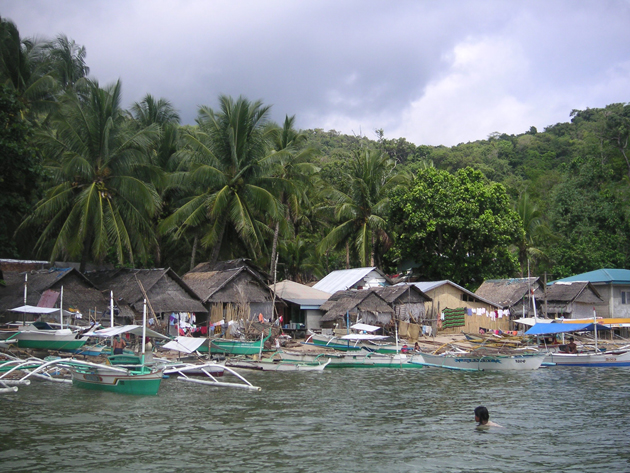Provided by Leona D’Agnes, Francis Magbanua and Joan Castro, PATH Foundation Philippines Inc.

Culion Island occupies the northernmost section of Palawan Province in the southwestern Philippines. This island is among the 14 hotspots ranked by the Philippine government as “extremely high priority” for conservation of marine biodiversity because of the increasing population and socioeconomic threats besetting its coastal resources.1 In Culion’s coastal villages, people are heavily dependent on coastal resources for survival and livelihood. Historically, Culion’s waters have been an open access fishery with no customary rights of tenure. This, coupled with rapid population growth in recent decades, has resulted in heavy exploitation and declining catch rates. By 2001, fishing grounds that formerly supported large stocks of commercial species had become severely depleted by overfishing, destructive fishing methods (including the use of explosives and cyanide), and general habitat degradation. Many residents were concerned that Culion would soon have “too many people and not enough fish to go around.2
To address these concerns, in 2002 the PATH Foundation Philippines, Inc., a private charitable organization, started the Integrated Population and Coastal Resource Management (IPOPCORM) initiative in coastal villages in Culion. They worked in partnership with the local government, local NGOs, community organizations (fishers, women and youth groups), and small entrepreneurs.
The IPOPCORM initiative empowered communities to implement and manage family planning activities simultaneously with coastal conservation and alternative livelihood strategies. Family planning activities included distribution and social marketing of contraceptives. Coastal management activities included MPA establishment and monitoring, community-based management planning, community surveillance efforts and mangrove reforestation. Microcredit and alternative livelihood options served as safety nets for maintaining income while ecosystems regenerated. The project also advocated for strengthened enforcement of existing laws prohibiting destructive fishing methods.
This approach has led to an improvement in the health of Culion’s reefs. Between 2001 and 2007, live coral cover improved from 25 to 32 percent and the average biomass of reef fish species more than doubled.3 Furthermore, it led to an increase in community wellbeing. Results of community surveys indicate family planning practice among Culion’s adults increased significantly between 2001 and 2007, as did safer sex practices among youth. Food security also improved, with fewer families in 2007 reliant on subsistence fishing compared to 2001 and fewer fishers resorting to destructive fishing methods.4
IPOPCORM’s success is attributed to the integrated strategy which, according to Hermann (2004) “lends sustainability to coastal resource management (CRM) interventions, which CRM provides a comprehensive context for coastal residents to recognize the necessity of limiting family size to achieve food security and improve their family’s welfare.5
The integration of family planning with coastal management has proven to be effective in both conserving Culion Island’s coastal ecosystems and improving human wellbeing. Smaller family size has increased food security, while greater diversity in options for livelihoods has improved financial security, thus reducing reliance on marine resources for survival. The prevention of unplanned pregnancy among women and youth has allowed them to participate more fully in community surveillance and mangrove rehabilitation efforts that have resulted in improved reef health. Additionally, greater awareness of the limits to growth and improvements in enforcement has reduced the perception of potential gains from marine resource exploitation.
- PATH Foundation Philippines. Rolling back the process of overfishing: Integrating reproductive health/family planning into coastal resource management. IPOPCORM Monograph Series 2, 18-24 (2007).
- Demographic Research and Development Foundation (DRDF). Baseline Community Survey for the Integrated Population and Coastal Resource Management Initiative: Final Report (Unpublished). (Makati City, Philippines, 2003).
- Marine Environment and Research Foundation (MERF). Resource and Ecological Habitat Assessment of Island-Ecosystems in Northern Palawan: Final Report (Unpublished). 1-72 (Makati City, Philippines, 2007).
- Castro, J. & D’Agnes, L. Fishing for families: reproductive health and integrated coastal management in the Philippines. FOCUS on Population, Environment and Security 15, 1-11 (2008).
- Hermann, C. The rewards of innovation: a review of the successful piloting of the Integrated Population and Coastal Resource Management Project (IPOPCORM). (PATH Foundation Philippines Inc, Manila, Philippines, 2004).
